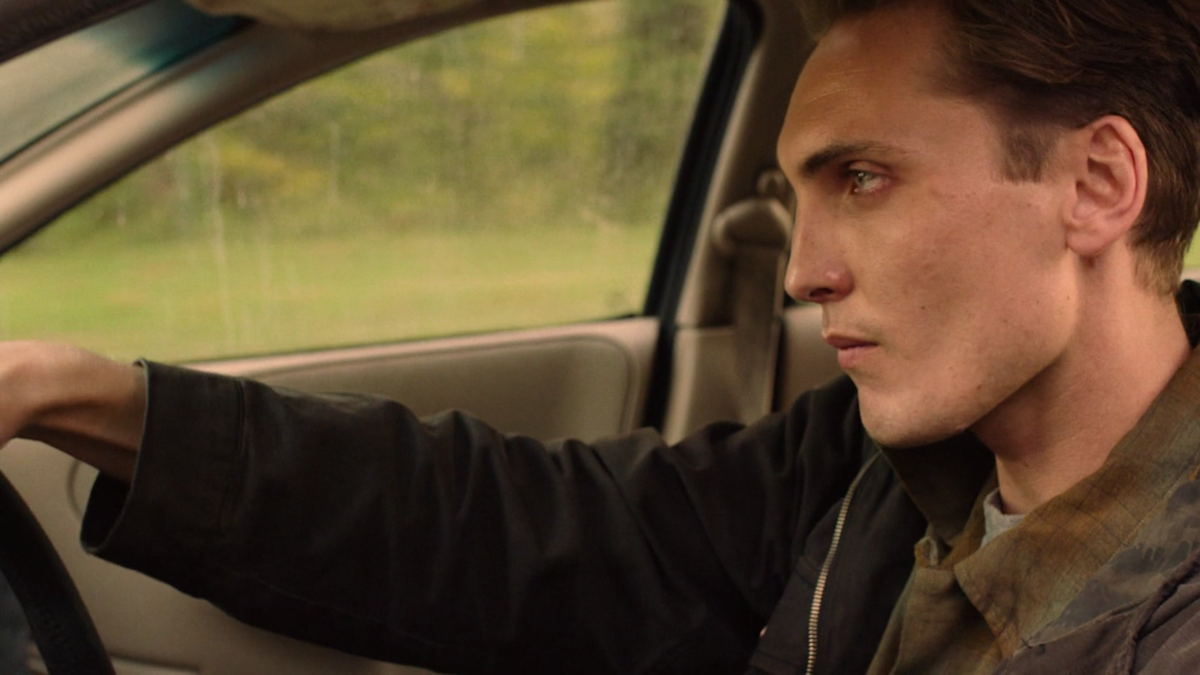Disclaimer: Twin Peeks is a recap/review series about the new season of Twin Peaks — which means there are gonna be spoilers here for everything old and new. If you’re not caught up yet, please do yourself a favor and at least consider it before reading this. If not, you’ll be pretty lost, and you need to get your bearings before diving in. Trust me on this one.
Twin Peaks has always embraced duality. Love and hate, peace and violence, life and death — it’s a subject the show (and, I would argue, David Lynch’s work writ large) is built on. This week’s episode reminded us of this yet again with some of the most brutal scenes in the series.
Episode nine may have taken a quieter focus on Garland Briggs and his legacy of love, but this week’s episode didn’t shy away from the horror of violence and hate. The opening of the episode itself is a violent incident brought on by none other than Richard Horne. He’s confronting Miriam, a witness to Richard’s hit and run that killed a small child. As much as I hate his character, I must give actor Eamon Ferren some credit here because Richard is terrifying no matter what he’s doing.

Miriam tells Richard she’s sent a letter to the sheriff’s department naming him as the killer and giving them a heads up in case anything happens to her. Obviously, Richard wasn’t going to take this at all, but the violence that follows is a startling opener. After breaking down her door and beating her to death, Richard leaves Miriam’s home and calls Chad (who else?), giving him instructions to intercept the letter. It was a stark and violent opening to one of the most vicious Twin Peaks episodes yet.
Despite this murderous opening (and wicked tone of the episode in general), soon after we’re treated to one of the brightest moments of the season so far — Harry Dean Stanton singing and playing a guitar. It’s such a welcome break from the onslaught of horror we’ve already experienced. Alas, we’re reminded that this peace can’t last forever when a mug crashes through a window. We’re taken to the source of the crash, and catch up with Steven and Becky from episode five.
It’s a scene that looks familiar — Steven is terrorizing Becky in their trailer home. Steven screaming in Becky’s face about cleaning up their house, how all of this is her fault, this could be a scene from the old Peaks. Simply replace Becky and Steven with Shelly and Leo or even Laura and BOB and there you have it. It’s a brief but disturbing sequence that brought back a question from the beginning of the season: Is it future or is it past?

Could Becky be following in her mother’s footsteps? Or Laura Palmer’s?
Twin Peaks seems so immersed in its own history of trauma that events are repeating themselves, so to speak. Could this be the work of Black Lodge residents? They have the most to gain from the trauma of the town, with their need for human suffering and pain, called garmonbozia (a la creamed corn), to sustain themselves. Whether this holds any significance remains to be seen, but I wouldn’t be surprised if the nature of Twin Peaks was a cyclical one.
Speaking of cycles, Becky and Steven aren’t the only ones echoing the past. As if one scene of Richard Horne terrorizing someone wasn’t enough, he gets another sequence of horror in this episode — one that may be the worst in the new season so far. After killing Miriam, Richard drives over to his grandparents’ house — the Horne household. Once he arrives, he goes on to attack Sylvia Horne and steal all of her money while a terrified (and tied up) Johnny can only watch, helpless. This whole sequence mirrors the domestic violence in the original show, specifically what we see in the Palmer household when Leland Palmer murders Maddy and is revealed to be Laura’s killer. Like Maddy, Sylvia is terrorized, beaten, and choked in her own home with only a helpless witness (for Maddy this was Sarah, for Sylvia it’s Johnny) nearby. While Sylvia survives Richard’s attack, I couldn’t help but think of Maddy when it was happening.
This scene struck me for multiple reasons. First, and most obviously, there’s the fact that Richard is stealing from his grandparents. This implies that he’s probably definitely Audrey’s kid, maybe even the result of Mr. C raping her while she was comatose (I screamed into a pillow to stifle my grief when it hit me after the sequence). That Lynch’s use of violence against women may even go to such a length is heartbreaking, but we still have eight more episodes to go and I’m trying to be optimistic.

The aftermath of Richard’s attack
Secondly, there were definite nods to Stanley Kubrick’s A Clockwork Orange. Specifically, this scene mimics the robbery/rape scene from the beginning of Clockwork; from the sheer brutality being showcased to smaller details (a mostly white room, Johnny being tied to a chair), there are echoes of Kubrick’s film here. It’s fitting to compare Richard and Clockwork’s Alex too; they’re both violent and unhinged individuals committing atrocities seemingly on a whim. Their motivations are unclear, and Eamon Ferren has said in a recent interview with Vulture, “It’s truly more scary to not really know where it comes from specifically. That’s what adds to the horror to Richard.”
This week was definitely one of the harsher episodes of Twin Peaks — an episode focused on violence against women specifically, and yet at the same time there were brief moments of warmth amongst the ugliness.
Albert and Constance Talbot, the South Dakota coroner, grab dinner while Gordon Cole and Tammy look on and radiate happiness for their friend. Catherine Coulson returns as the Log Lady and has another message for Hawk: “The glow is dying,” she says. “Laura is the one.” The message may not necessarily be good news, but just seeing Coulson again was a welcome break from the onslaught of episode ten.

Rebekah del Rio and Moby (??) stop by the Roadhouse at the end of the episode. Del Rio sings the Lynch-co-written “No Stars,” and every time her voice begins to ascend (in English and Spanish) I could feel the same thing welling up in me when I saw her now-iconic performance in Mulholland Drive — not quite sadness, but something touching it. Probable tears aside, it was another nice respite from the horrors of the episode.
These moments don’t negate the explosive violence in episode ten, but they do anchor it to something other than unhinged atrocities, which is important. Earlier, I mentioned that Twin Peaks was built on duality and this is no exception. There is certainly a significant amount of darkness here, but some light too. It’s hard to say for sure where next week will lead us, but no matter what, I’ll be here to help you get through it.




